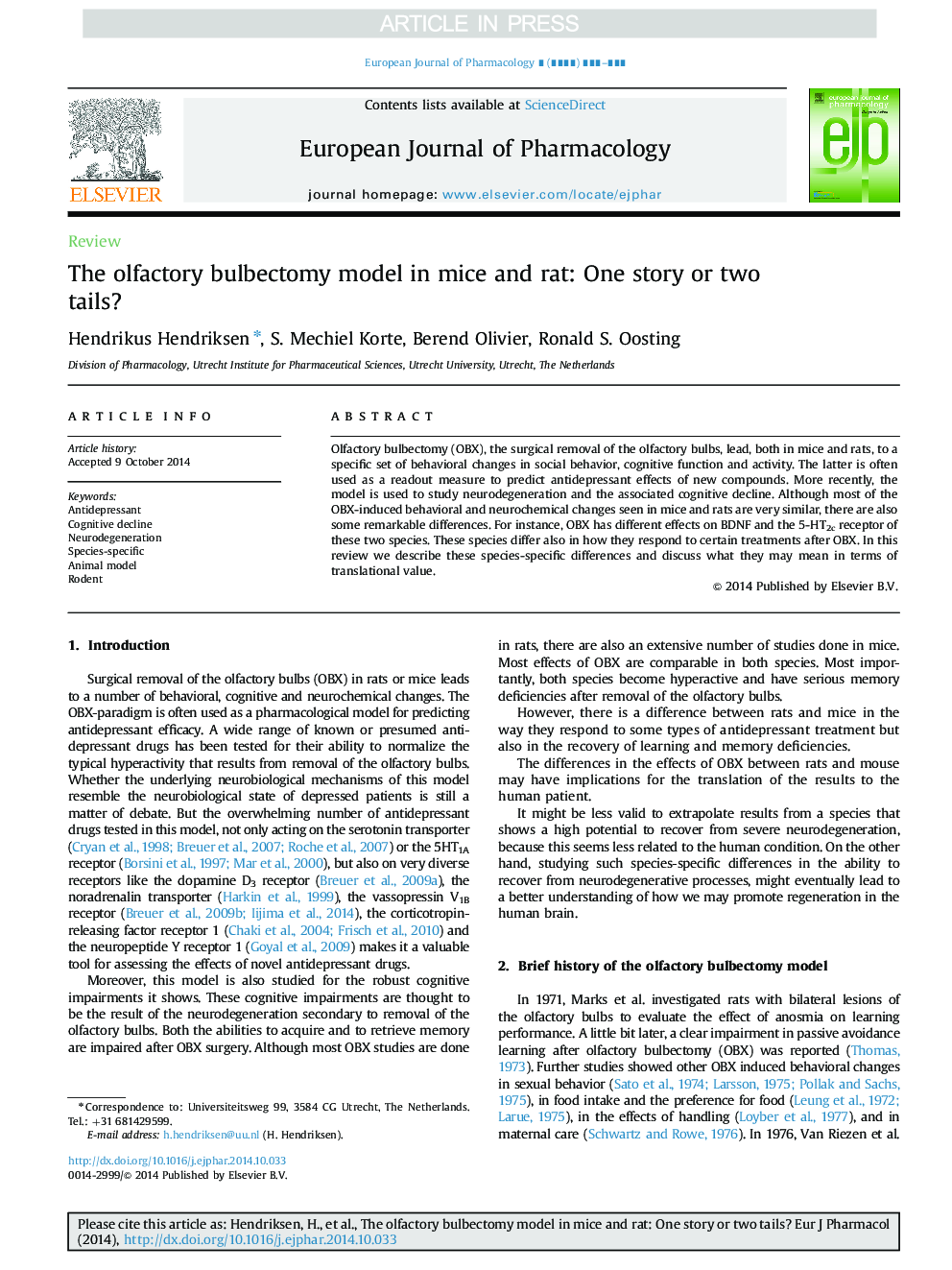| Article ID | Journal | Published Year | Pages | File Type |
|---|---|---|---|---|
| 5827462 | European Journal of Pharmacology | 2015 | 9 Pages |
Abstract
Olfactory bulbectomy (OBX), the surgical removal of the olfactory bulbs, lead, both in mice and rats, to a specific set of behavioral changes in social behavior, cognitive function and activity. The latter is often used as a readout measure to predict antidepressant effects of new compounds. More recently, the model is used to study neurodegeneration and the associated cognitive decline. Although most of the OBX-induced behavioral and neurochemical changes seen in mice and rats are very similar, there are also some remarkable differences. For instance, OBX has different effects on BDNF and the 5-HT2c receptor of these two species. These species differ also in how they respond to certain treatments after OBX. In this review we describe these species-specific differences and discuss what they may mean in terms of translational value.
Related Topics
Life Sciences
Neuroscience
Cellular and Molecular Neuroscience
Authors
Hendrikus Hendriksen, S. Mechiel Korte, Berend Olivier, Ronald S. Oosting,
